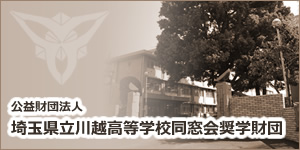川越中学校学友会第二号(明治36年1月25日発行)に修学旅行記が掲載されていました。
英文で著された旅行記もあります。
ご一読いただき、当時の生徒たちの英語力を推察してみてはいかがでしょうか。
英語教育においても、先進的であったといえるのではないでしょうか。
明治34年度第四年級日光地方修学旅行時のものと思われます。
本校創立時の一回生の作品です。原文のまま掲載します。
日光廟所感
岡田恒輔
Our class made an excursion to Nikko about a month ago, and actually saw the “Kekko” in reality.
On the morning of the twennty-nineth of October, we started from our inn went along the street of Nikko, crossed the bridge over the Daiya stream and went up a path leading toward the Toshogu through an avenue of cryptomelias.
The first thing that startled us was a large stone gate. It height measures thirty feet and the pillars are twelve feet in circumference. It is all made of splended granite. There stands a beautiful pagoda near it. With in the front gate, there is a bell presented by a Korean king, a lantern by Duchmen and many other curious things. The gate, called Yomei, and the shrine of Toshogu are the most beautiful of all. The former is adorned with many splendid sculputures; it will take all day long if any one might attempt to inspect it carefully; hence the name “Higurashino-mon.” The latter is ornamented with many costly paintingsu and beautiful sculptures. The longer we gaze at it, the more beautiful it appears.
Now these things were all made for the great hero Iyeyasu. We could not help admire the greatness (one word) of his power at that time.
In other countries we find many gigantic graves; for instance the piramids of Egypt, but in point of beauty, who would compare them with the shrines at Nikko? Therefore most of foreingnes who came to this country do not fail to visit Nikko.
We may feel proud for having such beautifu artistic structures as at Nikko.
After all Iyeyasu was a great man though he has some defects.
Neither he was loyal nor virtuous, but he left many works; handed down to posterity such beautiful works of art. From this point we couldn’t but admire him. In short Nikko is a place noted for its scenery, abundant relics and curiou of fine arts.
A proverb runs “Don’t say ‘Kekko’ that is exquiste unless you have seen Nikko.” I would advise all men to visit Nikko. I hear the Italian say “See Naples and die”; but I might say “See Nikko and die.”
By T. OKADA




















